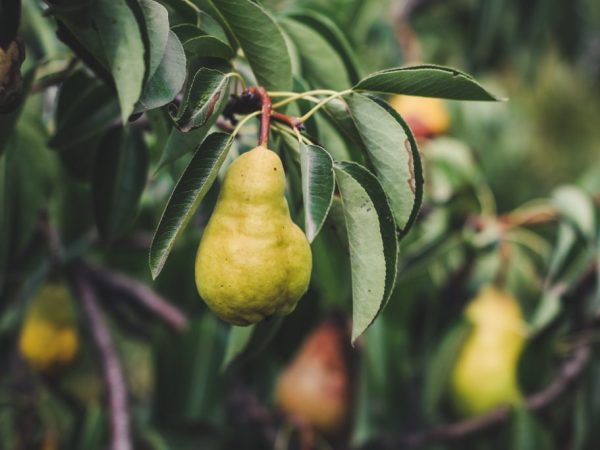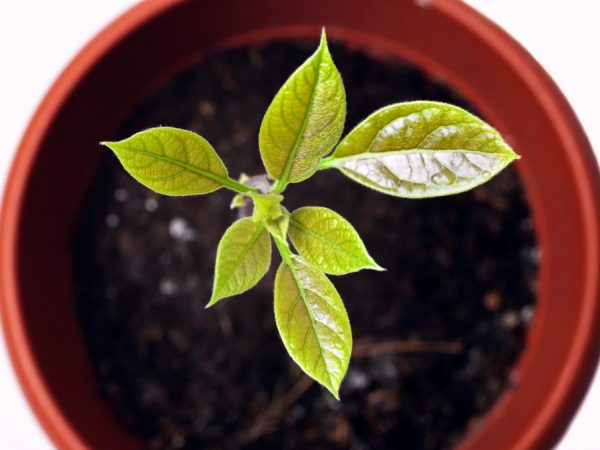Propagation of pears by cuttings
Among the ways in which you can grow a fruit tree, pear propagation by cuttings is distinguished. It is important to follow the procedure, as well as follow the rules for caring for the plant after cuttings.

Propagation of pears by cuttings
Pear varieties
To propagate pear cuttings, pay attention to trees with small fruits. It is good to breed them in this way. Shoulder straps of such trees take root faster, and the engraftment process is easy.
The varieties most adapted to growing by cuttings include:
- Zhigalov's memory;
- Muscovite;
- Elegant Efimova;
- Lada;
- Autumn Yakovleva.
These varieties show excellent results when grown from cuttings, shoulder straps take root well, get sick a little, grow quickly and bring a bountiful harvest.
Preparing cuttings
The preparation period for pear cuttings begins at the end of June and lasts until August. In the middle lane, cuttings are harvested later than in the northern regions due to the difference in climatic conditions.
Only healthy cuttings are selected: this contributes to successful reproduction. Shoulder straps before planting should bear fruit more than 2 times.
When choosing cuttings for propagation, pay attention to the following conditions:
- the top of the shoulder strap is greenish;
- the lower part began to harden and became covered with bark (in early spring the tree is still strongly weakened, and therefore the bark is greenish);
- foliage has blossomed, except for a couple of upper buds.
The sprouts should be cut off before sunrise, when they are filled with moisture as much as possible. The cut is made from the bottom up, at an angle of 45 ° towards the kidney. Before the procedure, a garden knife is sharpened: it must be sharp so that the operation of cutting off the branch is as fast and painless as possible for the main trunk. The tool must be disinfected so as not to infect the shoulder strap and the mother tree with an infection.
Important recommendations
- 2-3 internodes should remain on the branch, and the length of the air layer should be 6-10 cm. The upper cut should run horizontally above the bud at a distance of 5-6 mm. An incision is also made below the base of the kidney. Large leaves on the handle are shortened by ½ the length.
- The place where the cut is located is treated with a fungicide solution. Shredded charcoal is also suitable for disinfection.
- Cut cuttings, tied in bunches, are left in water for 16-18 hours. For better rooting, drugs that stimulate growth are added.
- After processing, the cuttings are ready for planting in containers.
Rooting

The plant takes root under the film
For growing pears, containers with a height of about 30-35 cm are chosen. After processing, the cuttings are placed in boxes with lined oilcloth and a pre-prepared substrate. To grow a pear, the cuttings must root well, for this:
- the bottom of the container is covered with nutritious chernozem, adding organic fertilizers; rotted compost or manure is ideal; the soil layer should be about 20 cm;
- a layer of sandy substrate 5-7 cm high is poured; choose well-washed medium- or coarse-grained sand, mix it with the ground in a ratio of 1: 2: the roots develop well in such soil;
- abundantly moisten the soil with a solution with the addition of a growth stimulator;
- planting is carried out to a depth of 2 cm: deep planting provokes decay;
- cover with a transparent bag or glass on top to create greenhouse conditions.
Watering
The soil should not dry out completely - it is regularly sprayed with clean water and periodically ventilated. The boxes are slightly shaded to prevent direct sunlight from reaching the sprouts. For seedlings, abundant, but diffused lighting is good.
The leaves on the cuttings should not touch each other, and also lean against the walls of the box or film.
Humidification is carried out by spraying from a spray bottle. Watering with a trickle should be abandoned: it erodes the soil. Airing is carried out no more than once every 7-8 days.
These methods promote the appearance of the first roots in 25-30 days. As the cuttings take root, the pears reduce the spraying intensity, but increase the airing time. After 15 days, the cover is removed completely.
Disembarkation and leaving
Cuttings are planted in the fall. To do this, in the third decade of September, boxes with seedlings are transferred to the garden. The seedlings are taken out of the box along with the oilcloth and placed in a prepared hole. The oilcloth is carefully pulled out so as not to damage the roots, then the hole is buried at a level with the ground.
To insulate the root system, use:
- peat;
- sawdust;
- coniferous spruce branches.
Landing in a permanent place is performed in 1-2 years.
With proper care, propagating a pear with cuttings and shoots is not difficult. Already in the spring they begin to grow intensively. During the period of active development, abundant watering and complete feeding are important for them.
For several years after planting, watering is carried out by sprinkling. To do this, use special garden tools, which include sprayers and watering hoses.
For watering, grooves dug along the length of the trunk circle are also used. They should be 15 cm deep. Water is poured into the groove, after watering it is buried.
The trunk circle is the place through which the root system receives nutrients. In the spring, it is planted with green manure, which act as a good loosening agent of the soil. The roots of the grass that remain after mowing, in the process of decay, replenish the soil with a large amount of nutrients.
Conclusion
Growing a pear from a cutting is easy, and when done correctly, this method gives excellent results. Trees bred in this way give a full, high-quality crop in 3-4 years.


